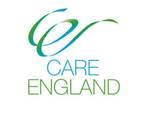
Hi-tech device allows care-workers to support up to NINE TIMES more vulnerable people every night

18 April 2023
Using care tech in the community also speeds up patient discharge from hospital
A high-tech device costing around £100 is helping social care teams in local communities care for up to nine times as many vulnerable people than previously, offering hope for the UK’s stretched social care system.
A pilot study in Telford and Wrekin using smart telecare devices created by UK care tech company Oysta, allows two mobile care workers who would previously have only been able to care for two people over night, to support between 16 and 20 people instead.
The devices, which are being provided by Telford and Wrekin Council for residents receiving support by local care provider Supreme Home Care, allow people who need access to care overnight to call for support by simply pressing a button which is monitored by a small team of mobile care workers who can respond quickly.
The system is helping to increase the number of people who can receive care in their own homes, including many who might otherwise remain in hospital or move into residential accommodation, by providing care support when it is needed rather than scheduling in potentially unnecessary night visits.
Sue Robson, founder of Supreme Home Care said the use of technology allowed them to provide “reassurance for vulnerable people and their families with a service which allows us to serve a greater number of people who need our care.”
“Before we started using the telecare devices, we would have one carer per client on one shift from 10pm – 7am whether or not the client was sleeping or needed any assistance. But now the client – or a family member - can alert us by pressing their button and we can respond with any help that is needed.”
The Telford-based company say the service has been very popular with staff and clients since it provides a reliable yet non-intrusive way of supporting vulnerable people. They are now looking to recruit additional team members to meet the growing demand, which will enable them to provide support to more people including those who might otherwise occupy beds in NHS hospitals.
“When someone is ready to leave hospital, they may be nervous about being at home on their own. With this new system, they can have the reassurance of help on hand when they need it – but we often find that after a few nights they are confident on their own,” Ms Robson explains.
“For those who are recovering at home – or those with long term conditions who don’t want to be moved out of their own home - we can provide the right help at the right time.”
The service is also popular with those providing care, who can keep busy during their shift helping a greater number of people in the local area.
Coral Chaproniere, Supreme Home Care’s Area Manager who looks after clients using Oysta, says:
“If we were still doing traditional ‘night sits’ we couldn’t support as many people as we do now which means there may have been people left without support. As a carer, I don’t like to think of people out there on their own.
“The Oysta devices give people confidence that they can return to their own home. For someone who has been in hospital they are used to having someone there all the time. Now, if anything happens, they know they can call on our team and it builds up their confidence to remain in their own homes.
“With pendant alarms, families are often the first port of call so it puts additional pressures on families who still need to get a good night’s sleep. We can now provide that overnight support and help our clients and their families.”
Mr Moore, a Supreme Home Care client from Telford, said using a device “gives me the confidence to remain in my own home.”
“I can go to bed knowing that if anything happens in the night, I will have a carer on my door in minutes ready to put me right.”
Oysta’s founder, Mario Zuccaro, believes that using digital technology is the best way to help address both short- and long-term problems in health and social care, saying recent reports “demonstrate the need forbetter technology solutions to allow care workers to provide support for a greater number of vulnerable people without compromising care.”
And with increasing focus on the funding shortfall in social care, Oysta can also demonstrate an average saving of £160 per person per night.
“A recent CQC report called for new ways of working to bridge the gap between health and social care services, not just prop up existing approaches, and that is exactly what we have been doing both with Supreme Home Care in Telford and in other local authorities around the country,” he adds.
“Many people who need additional support are still independent, they just need a cloak of care to provide that extra layer of protection which also enables family and friends to be integral to that person’s needs.
“Most people these days are comfortable with using smart devices, such as a phone and are happy to use devices particularly if it means they can leave hospital sooner or stay active and independent.”
Jonathon Rowe, Executive Director Adult Social Care, Health Integration and Wellbeing at Telford & Wrekin Council said:
“We are proud that Telford & Wrekin Council is among a handful of Councils in the UK embracing digital devices, such as those provided by the care tech company Oysta, as a new way of helping vulnerable residents to immediately get in touch with their care provider when needed, from the comfort of their own home.
“Supporting independent living for eligible residents is something we are really passionate about, as it enhances their independence and confidence and also provides peace of mind for their families.






